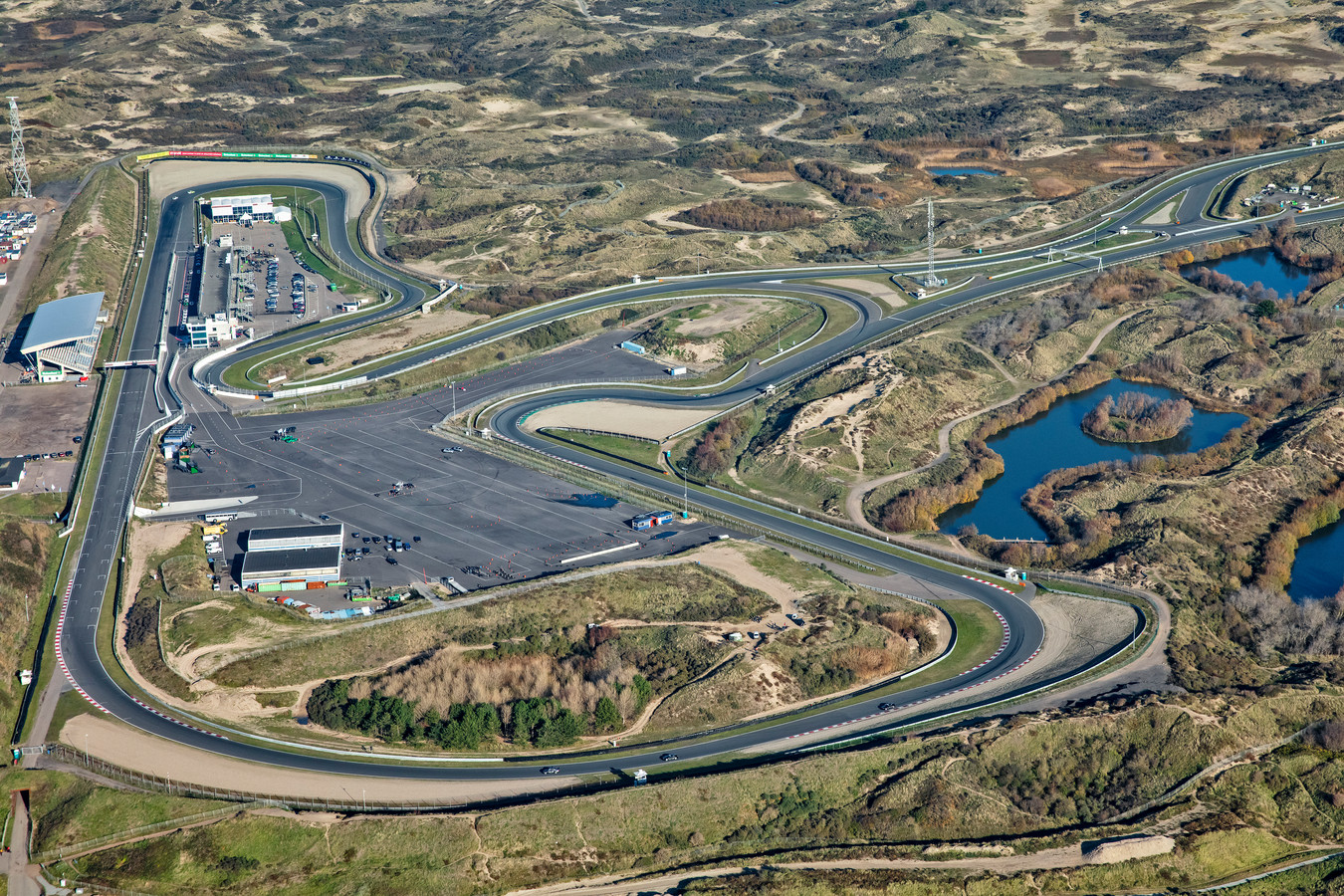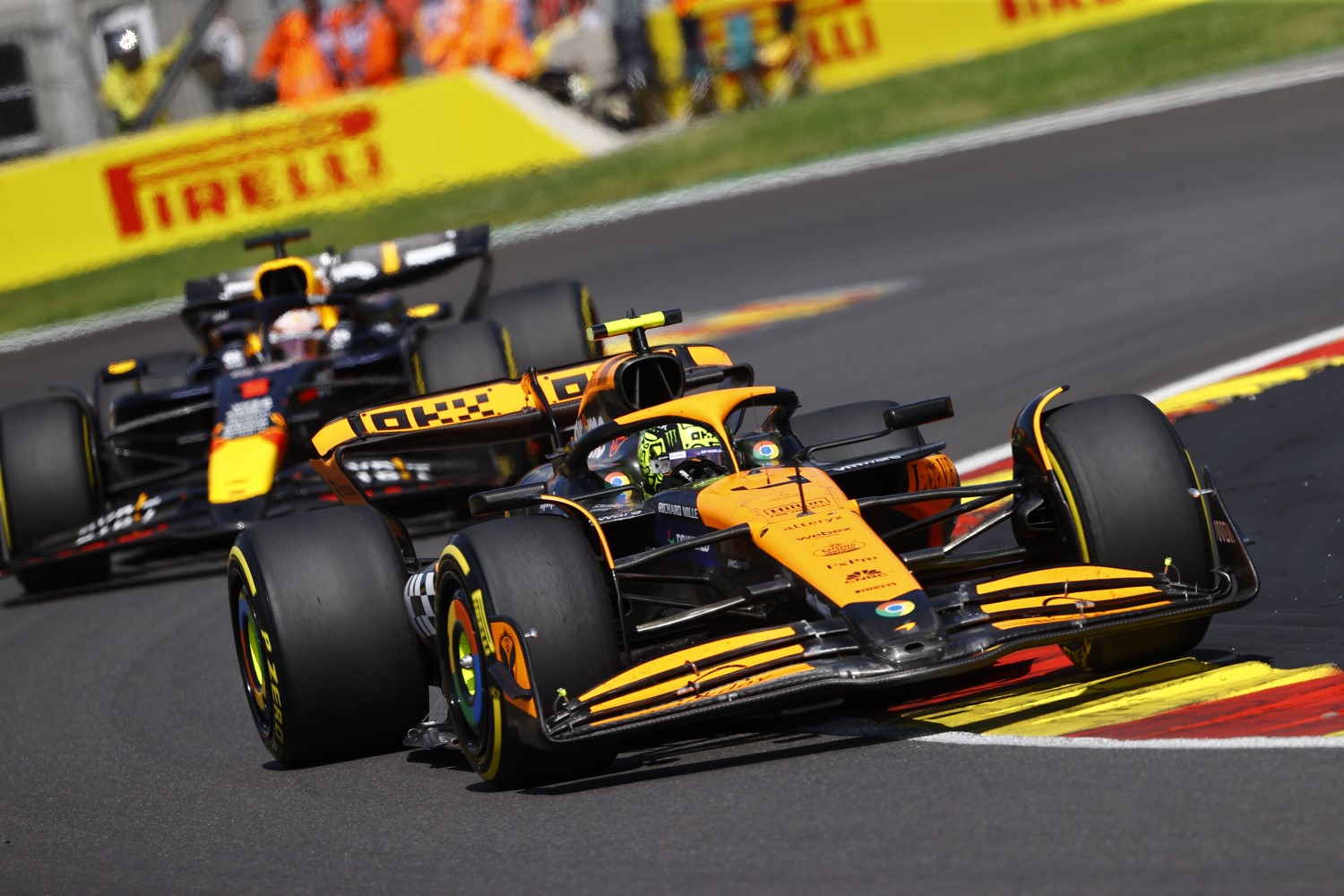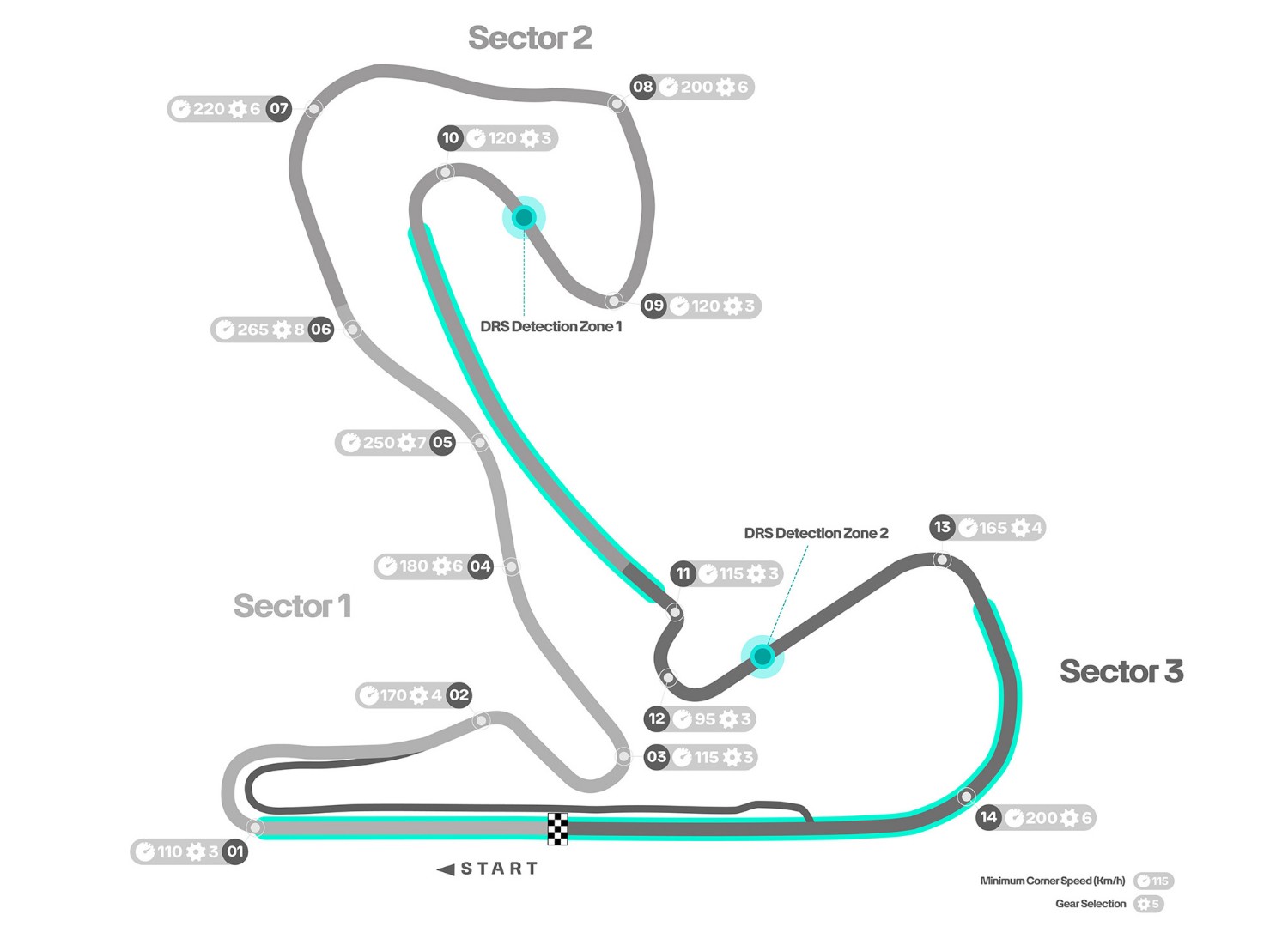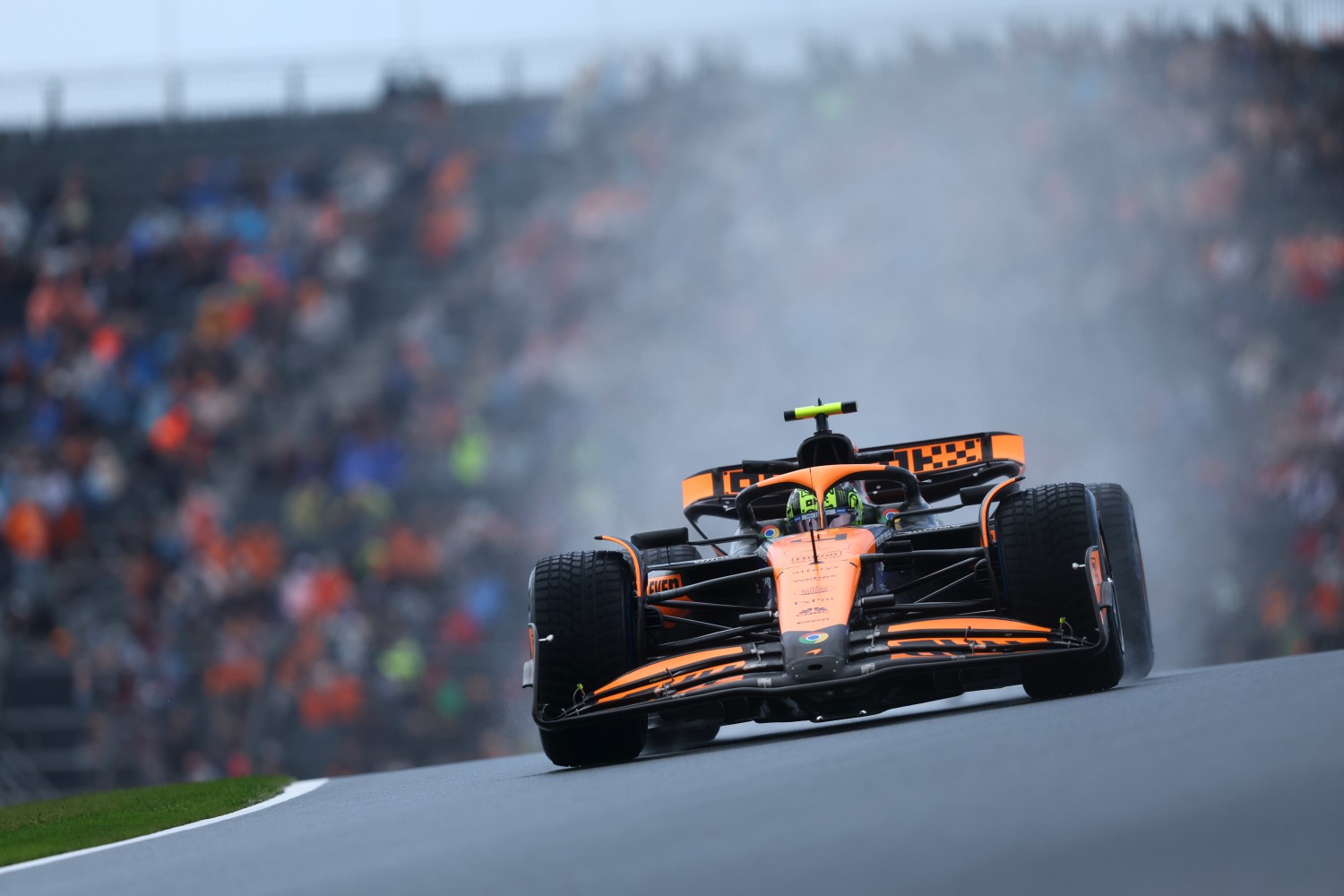Formula 1 News: 2025 Dutch GP at Zandvoort Preview
The second half of the 2024 FIA F1 World Championship season will begin with Round 15, the Dutch Grand Prix, at Circuit Zandvoort.
Zandvoort, the nearest coastal town to the capital Amsterdam, has long been a tourist hotspot, and in the late 1940s a racetrack was laid out across its dunes. The Dutch Grand Prix was a regular staple of the calendar through the early decades of the championship but it was discontinued after 1985, and the layout was shortened and modified. The emergence and rise of Max Verstappen sparked renewed interest in Formula 1 and the Dutch Grand Prix was revived in 2021.
Zandvoort proved to be a popular destination, complete with its nearby expansive sandy beach and promenade, while the passionate local fans turn the grandstands a sea of orange throughout the weekend. This year’s event will be the penultimate running at Zandvoort, following the decision of the organizers not to continue after 2026.

The layout re-introduced in 2021 remains faithful to the original challenges of the fast and flowing circuit, most notably the right-hand plunge through Scheivlak, and in its short existence the venue’s modified turns have received widespread acclaim. They are Turn 3, Hugenholtz, which features 18-degree banking that opens up multiple racing lines and demands complete commitment, as does the banked final corner, Arie Luyendykbocht, which slingshots drivers onto the pit straight and towards the 180-degree first corner, Tarzan, which provides the best overtaking opportunity of the 4.3km lap.
After 1985 Formula 1’s Dutch Grand Prix was discontinued, and Zandvoort’s layout was shortened, but the rise of national hero Max Verstappen raised the notion of the event returning to the championship. In 2021, after a year’s delay due to the pandemic, the Dutch Grand Prix was revived, and Formula 1 returned to the venue for the first time in 36 years.
Circuit Zandvoort is old school and while the facility was brought up to Formula 1 standards – with redesigned run-offs and barriers – the layout remained fundamentally unchanged. The circuit features a mixture of fast and flowing curves, most notably the right-hand plunge through Scheivlak, alongside slower and more technical turns in the middle sector.
Zandvoort is a fantastic place to resume the season. It’s a challenging track with an old-school feel; banked corners and high-speed sections undulating through the dunes. There’s always an incredible atmosphere with the passionate Dutch fans and it’s always a fantastic celebration of our sport. I’m sure this year will be no different and I’m excited to get there.

The most striking revisions came to two corners that had banking added, providing an additional challenge, while promoting a variety of racing lines. Turn 3, Hugenholtz, has 18-degree banking while the final corner, Arie Luyendykbocht, features 15–18-degree banking as it propels drivers towards the pit straight.
The back to back races in Zandvoort and Monza, which start the second half of the season, are a fascinating pairing. Monza is a low downforce circuit, hosts the second ATA event of 2023, and will use the softest of the Pirelli tire compounds. In stark contrast, this weekend is a standard event on the short, twisty Zandvoort track with the hardest of the Pirelli tire compounds.
The Zandvoort circuit sits right on the coast, but mostly sheltered by the surrounding dunes. The circuit is characterized by heavy banking in several corners, including the final corner, which contains a section of DRS deployment. The overall layout and placement of the curbs can lead to car damage, and the drivers will need to be mindful of the risk-reward trade at this track.
The circuit places a heavy demand on the tires, and therefore we have some of the hardest compounds available, which should work well here, especially if the track is hot. Overtaking is difficult, and so there is a premium on race strategy and suitable management of the tires.
Passing another car is pretty difficult at Zandvoort, as the track is narrow and generally twisty. It means that qualifying has great importance here. Apart from the straight, there is another DRS zone between turns 10 and 11.

Rule change to spice things up
The FIA has confirmed a significant tweak for this weekend’s Dutch Grand Prix, with the pit lane speed limit at Zandvoort raised from 60kph to 80kph in a bid to encourage more varied strategies.
Traditionally, the narrow and winding seaside venue has been one of the hardest places on the calendar to overtake, while the restrictive 60kph pit lane rule — implemented to protect mechanics in the tight confines — has heavily discouraged teams from making more than one stop.
Races have tended to converge on a one-stop strategy when dry, limiting the opportunities for tactical variation.
By cutting the time loss of a pit stop, officials hope to open the door to two-stop strategies, particularly with Pirelli also opting for a softer range of tires than in 2024.
Race Statistics
Lap distance: 4.259km. Total distance: 306.587km (72 laps)
2023 pole position: Max Verstappen (Netherlands) Red Bull One minute 10.567 seconds.
2023 race winner: Verstappen, Red Bull. Verstappen has won all three races from pole position since the race returned to the F1 calendar.
Race lap record: Lewis Hamilton (Britain) Mercedes 1:11.097 (2021)
Start time: 1300GMT (9:00 Eastern Time)
Weather Forecast
Friday: Free Practice 1 & 2
91% chance of rain. A shower in spots in the morning; windy in the afternoon with showers
High of 69 degrees-F and Low of 61
Wind out of the SSW at 21 mph
Saturday: Free Practice 3 & Qualifying
78% chance of rain. Mostly cloudy and breezy; showers in the morning followed by a shower in spots in the afternoon
High of 70 degrees-F and Low of 62
Wind out of the SW at 20 mph
Sunday: Grand Prix
65% chance of rain. Clouds and breaks of sun; windy with a couple of showers, mainly early in the day
High of 70 degrees-F and Low of 59
Wind out of the SW at 23 mph
Fact File: Dutch Grand Prix
- This weekend’s race will be the 35th Dutch Grand Prix to count towards the FIA Formula 1 World Championship. Since the first edition in 1952, all have been run at Zandvoort. The current track layout made its debut in 2021, when the race returned to the calendar for the first time since 1985.
Jim Clark is the driver with the most wins here, on four, all in a Lotus. Behind him are three other world champions, with three victories apiece: Jackie Stewart, Niki Lauda and Max Verstappen. The Dutchman leads the way when it comes to pole positions with three, joint equal with René Arnoux, while Clark and Lauda head the list for podium finishes with six each. Ferrari is the most successful team with eight wins, ahead of Lotus on six and McLaren on four, the latter winning here last year courtesy of Lando Norris. On eight, Lotus has the most poles, followed by Ferrari on seven, these positions reversed when it comes to podium finishes, Ferrari on 26, Lotus on 16. - Zandvoort clocks in at just 4.259 km.
- It is perhaps no surprise therefore that we see the second-highest lap total of the year here at 72 for Sunday’s Grand Prix. That is just six short of the number we complete at the Monaco Grand Prix, the highest total of the season.
- The circuit features 14 corners, four to the left and 10 to the right.
- Zandvoort doesn’t feature many long straights, and a lot of the lap is spent in these 14 corners. It’s therefore a track with low-power sensitivity and engine duty, so the Power Unit isn’t put through as much strain as at other circuits.
- Just 55% of the total lap time is spent at full throttle, which equates to just over 65% of the lap distance. It is most similar in characteristics to Interlagos in Sao Paulo in that sense.
- In general, Zandvoort has an old-school feel, with fast and flowing turns, a mix of corner speeds, undulations, gravel traps and banked turns. It puts many aspects of an F1 car to the test.
- Zandvoort is nestled in the rolling sand dunes and next to the beach on the West coast of the Netherlands. The main straight is the closest part to the coast and the back section winds its way through the dunes.
- Because of the many high-speed changes of direction, where the mass of the car can work against you, Zandvoort has the highest mass sensitivity of the year – which means, carrying more fuel will be more penalizing.
- Zandvoort has one of the quickest lap times of the season and is the second shortest circuit in length after Monaco.
- The 72-lap race distance is the second most on the calendar (also after Monaco).
- It is the third highest track for downforce sensitivity, which means maximum or very high downforce is required. The only two tracks that rank higher than Zandvoort are Budapest and Monaco.
- The Zandvoort pit lane is one of three on the calendar to have a 60 km/h speed limit, rather than the usual 80. The other circuits are Monaco, and Singapore.
- For 2024, the pit building in Zandvoort was extended by six garages to accommodate the 11th (Cadillac) and eventually 12th F1 team.
Pirelli – 75 Years
This weekend’s Dutch Grand Prix marks a milestone in Pirelli’s time in Formula 1, as this race will be the five hundredth world championship round of motorsport’s blue riband category in which the Italian marque has had an official presence. The story dates back to 13 May 1950 and the British Grand Prix, which was also the very first world championship event. That day at Silverstone, four Alfa Romeos and four Maseratis were fitted with Pirelli tires and the race winner Giuseppe Farina, followed home by Luigi Fagioli and Red Parnell, all driving Alfas, gave the Italian tires a clean sweep of the podium places. Since then, Pirelli has been present at 499 events, split between three eras: from 1950 to 1958, from 1981 to 1991 (although not in 1987 and 1988) and, from 2021 onwards, it has been the FIA Formula 1 World Championship’s Global Tire Partner.
There will be celebrations at the Zandvoort track and these will continue the following weekend when Monza hosts the Italian Grand Prix, of which Pirelli is the Title Sponsor. In the Netherlands, all the cars and all the slick tires will carry a special 500 GP logo, which was revealed in London on 18 February at the celebrations for 75 years of Formula 1. In Monza, team personnel and drivers, will join senior management from F1, the FIA and Pirelli for a celebratory photo a few hours before the race start.
The compounds
For the race in the Netherlands, Pirelli has gone a step softer in terms of compounds than last year. The teams will have a choice of the C2 as Hard, the C3 as Medium and the C4 as Soft, whereas in 2024 the available compounds were C1, C2 and C3. The decision, taken in conjunction with the FIA and the championship promoter, has the aim of increasing the likelihood of a strategy based on two stops, rather than just the one-stop, which has been the predominant choice since this race returned to the calendar in 2022. A further step in this direction stems from the FIA’s decision to increase the pit lane speed limit from 60 to 80 km/h, thus reducing the time taken for a pit stop. According to simulations provided by the teams, the one-stop is still quickest, partly because overtaking is notoriously difficult at Zandvoort, with very few straights apart from the main one, combined with the fact the whole track is quite narrow.
In 2024
16 drivers lined up on the grid on the Medium tire, while three, Hamilton, Tsunoda and Bottas went for the Soft, with Magnussen starting from the pit lane on Hards. Three quarters of the field made just one stop during the race, taking on the Hard as the second set, while Magnussen went with the Medium. The Mercedes pair pitted twice – Hamilton used two sets of C3 and Russell one – while the remaining three, Tsunoda, Bottas and Zhou, ran all three available compounds, with Albon choosing to run Medium, Hard, Medium.
Hulkenberg drove the longest stint of all, completing 57 laps on the Hard. Piastri topped the list with the Medium on 33 laps, while Hamilton ran 24 on the Soft.
Keyword: Energy density
Energy density is the amount of energy contained or stored in a volume or mass of a substance. Applied to Formula 1 tires, the concept refers to the energy that is absorbed, accumulated and dissipated by the tire when it is run on track. This energy is generated mainly through contact with the track surface and the stress to which it is subjected, from both deformation and frictional forces. The more corners the car drives through or the higher the speed, the greater the energy exerted on the tire. This energy is turned into heat, increasing the temperature of the rubber, which directly affects grip levels, tire degradation and performance. Therefore, it is essential to manage energy density in order to keep tire temperatures within the optimal operating window to maximise performance. Poor energy density management, for example in the case of incorrect car balance, can be a contributing factor to issues such as graining or blistering. In terms of the outright amount of energy exerted, Suzuka, Lusail, Silverstone and Spa are all harder on tires than Zandvoort. However, the track that hosts the Dutch Grand Prix is the one where energy density is highest, due to several factors including its relatively short length, the high number of corners, combined with the lack of straights where tires could be rested and cool down.

